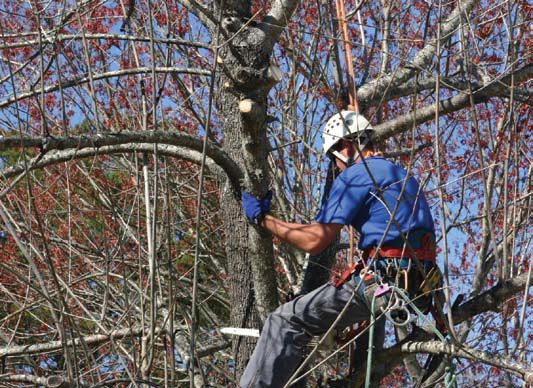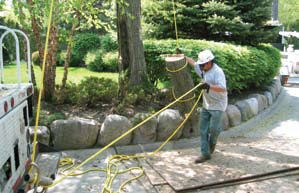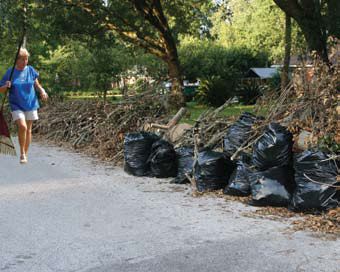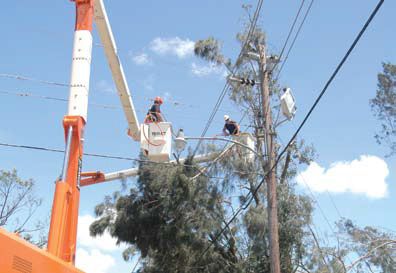
Be Safe: Hire a Tree Expert
Tree Care Professional
Tree care professionals with adequate equipment and insurance can handle these situations:
-
Taking trees down in open areas.
-
Removing dead or hazardous limbs.

Certified Arborist
Situations that require advanced training and are best handled by ISA certified arborists are:
-
Removing a leaning tree or broken limb that is near a potential target.
-
Reaching limbs that require climbing.
-
Restoring a damaged tree that could be saved.
-
Pruning to promote good structure.

Hiring an Arborist
Hiring an arborist is a worthwhile investment. Trees increase property value when they are well maintained but can be a liability if poorly pruned or unhealthy.

Beware of scams!
Unqualified individuals wanting to make a quick dollar may bring chain saws and equipment to help clean up after the storm. However, qualified arborists from around the country also come to help. Learn to identify the qualified arborists because unqualified workers may get hurt or cause irreparable damage to trees.
Use These Questions to Help You Find a Qualified Arborist
Insurance
-
Are you insured for property damage, personal liability, and worker's compensation?
If you hire an uninsured company, you may be held responsible for medical bills and lost wages for injured workers.
Certification and Training
2. Are you certified by the International Society of Arboriculture (ISA)?
Being certified requires professional experience and knowledge of the best techniques in the industry. Arborists attend training courses and continuing education classes to learn the latest research.
3. What are the ANSI Z133.1 and ANSI A300 guidelines?
The American National Standards Institute (ANSI) prints these two guidelines, with which all tree care professionals should be familiar. ANSI Z133.1 represents safety standards for tree care operations in the United States. ANSI A300 represents the best management practices in the industry for pruning and other tree care operations.
Estimates
4. What are the procedures involved, equipment used, price, and time frame?
Get more than one written estimate. Keep in mind that specialized equipment, qualified skills, and insurance will cost more. Good tree work is worth the additional investment; poor work may cost more in the long run.
Homeowner: Stay Safe!
Homeowners are seriously injured trying to do their own tree work. It is always a good idea to consult a professional before undertaking any major restoration or removal. Professional tree workers are required by law to wear personal protective equipment: hard hat, gloves, goggles, chaps, and appropriate footwear. If you decide to do some of the cleanup yourself, remember to follow these guidelines:
-
Do not use a chain saw if you are not experienced in operating it or if you are not physically fit.
-
If you must use a chain saw, work only on the ground.
-
Never do any tree work that involves felling trees, climbing of any kind, or using ropes. Get a professional to help you with these situations.

Electrical Hazards
Trees can uproot underground utilities and tear down power lines during hurricanes. The combination of electrical wires and ?ooding creates a hazardous environment that requires extreme caution.
-
Only qualified line-clearance arborists are allowed to work near electrical lines.
-
Call the power company to report tree limbs that have fallen on a power line.
-
Assume all power lines are energized and do not touch. improper use of generators may energize lines without warning.
-
Beware! Electrocution may occur if any part of your body touches a conductor (water, tool, tree branch, fence, etc.) in contact with an energized power line.

To Find a Certified Arborist In Your Area, Contact:
International Society of Arboriculture (ISA)
(217) 355-9411 or (888) 472-8733 (941) 342-0153 (in Florida)
UF/IFAS Extension Offices